Julien Baker
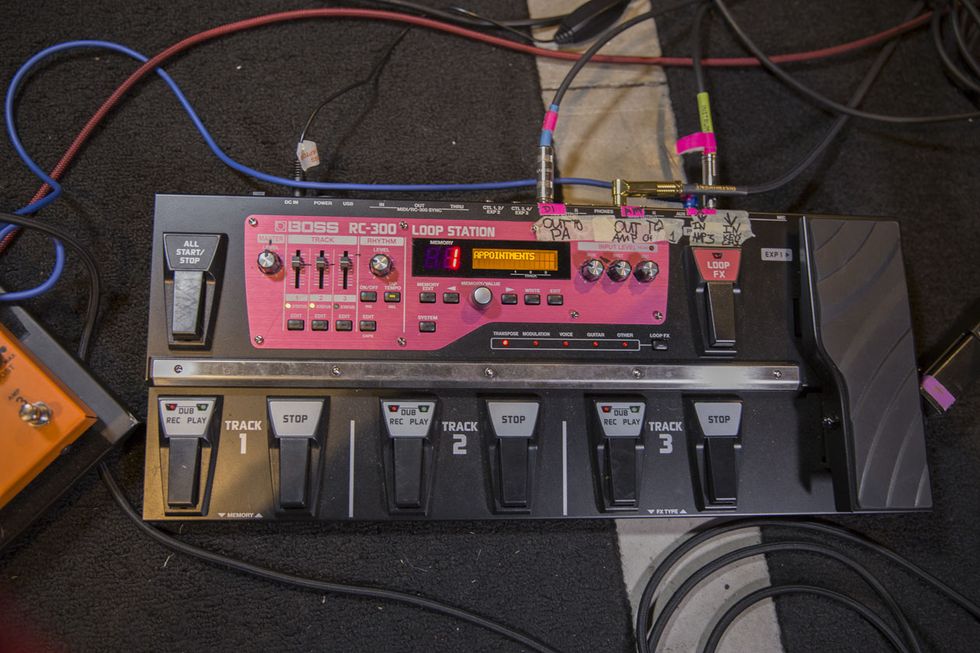
While her band, boygenius, performs as a trio (occasionally with backing musicians), Julien Baker is the only performer onstage during her solo set—a scenario that requires a lot of different sound-generating gear. To switch between her two amps—a Fender ’68 Custom Twin Reverb and a Fender Blues Deluxe—she employs Morley George Lynch Tripler and ABC switchers, and to create audio loops she uses a Boss RC-3 Loop Station.
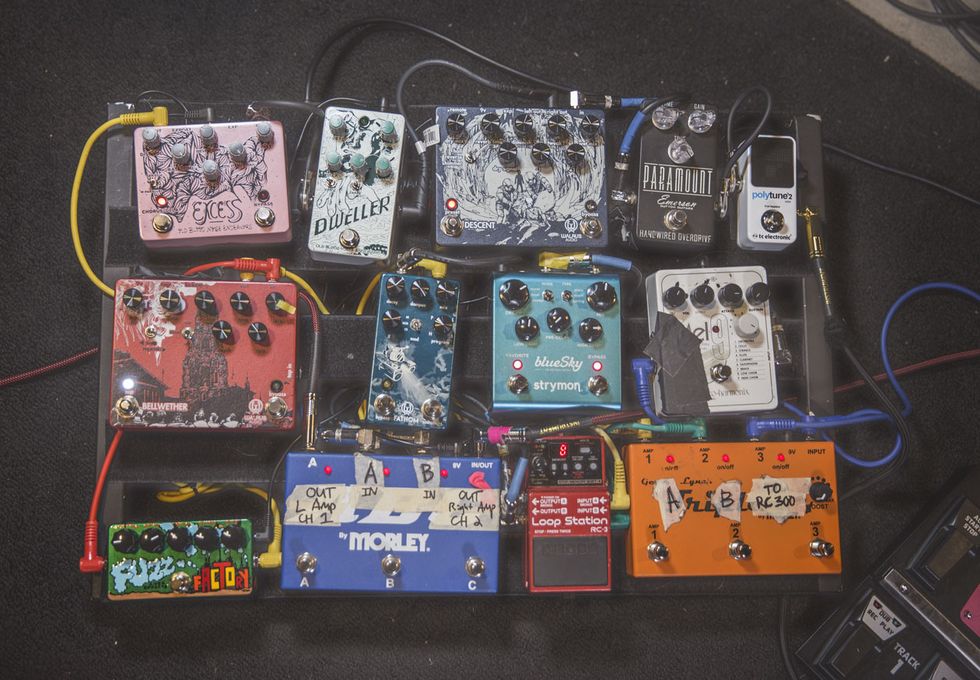
The units she uses to effect her guitar signal include an Electro-Harmonix Mel9, a Strymon blueSky Reverberator, a trio of Walrus Audio pedals—a Fathom, a Bellwether, and a Descent—a ZVEX Fuzz Factory, an Emerson Custom Paramount Overdrive, and a pair of Old Blood Noise Endeavors stomps: the Excess, and the Dweller. Her guitars—typically a blue Fender Tele or a butterscotch Tele with G&L ASAT pickups, are kept in tune with a TC Electronic PolyTune2 Mini.
Check out the full article and her gear.
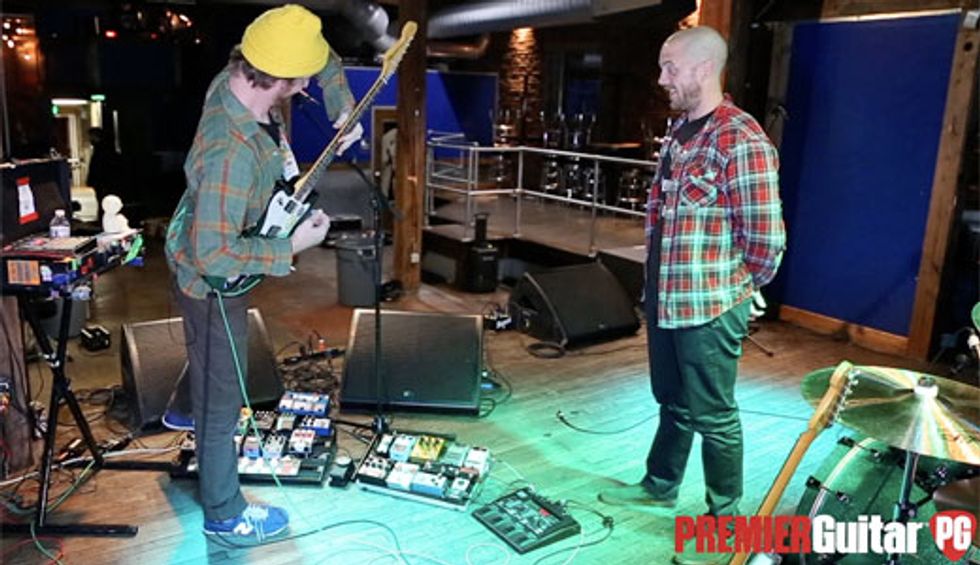
Nick Reinhart
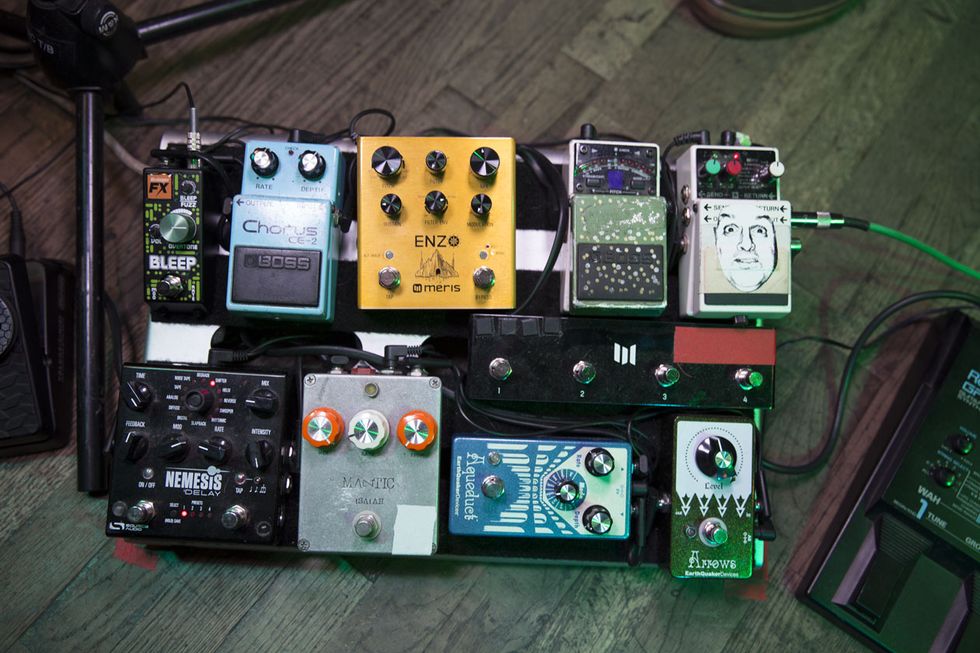
Tera Melos’ notorious tone-bastardizer, Nick Reinhart, combines quirkily modded pawnshop axes with boutique pedals and yesteryear’s cutting-edge guitar-synth technology. With regard to the latter, the tonal insanity begins at his circa-1996 Roland GR-30 floorboard.
Post GR-30, the wildness continues with a board holding EarthQuaker Devices Arrows and Aqueduct stomps, a Mantic Isaiah, a Source Audio Nemesis, a Meris Enzo, a Boss CE-2 Chorus, and a Rainger FX Bleep. There are also two Bosses: a TU-2 tuner and an LS-2 Line Selector, the latter of which switches between magnetic and synth pickups on Reinhart’s main axe, a ’90s Squier Super-Sonic.
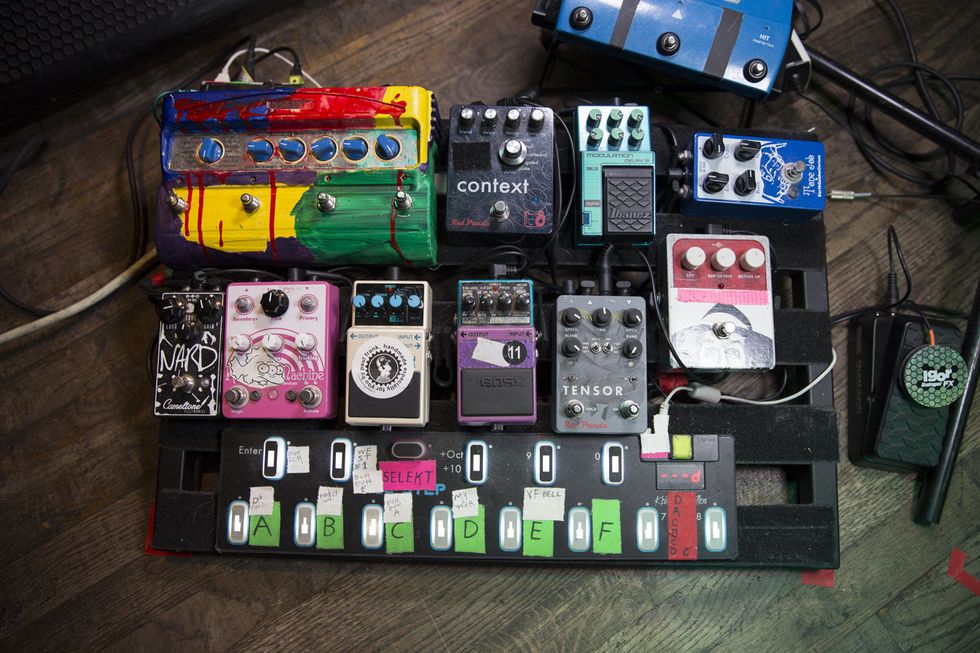
Reinhart’s second board features a paint-splattered Line 6 DL4 Delay Modeler, Red Panda Context and Tensor pedals, an Ibanez DML20 Modulation Delay III, a pair of EarthQuaker Devices devices—a Tone Job and a Rainbow Machine—an Electro-Harmonix Micro POG, Boss BF-3 Flanger and DD-3 Digital Delay stomps, and a Cameltone Nard. Along the bottom is a Keith McMillen 12 Step controller that Reinhart uses to access combined patches and vocal effects. To the right of the board is a Jim Dunlop Volume (X) Mini for altering the Tensor’s pitch, and atop that is a pressure-sensitive Igor pad for warping the Rainger FX Bleep’s response.
Check out the full article and his gear.
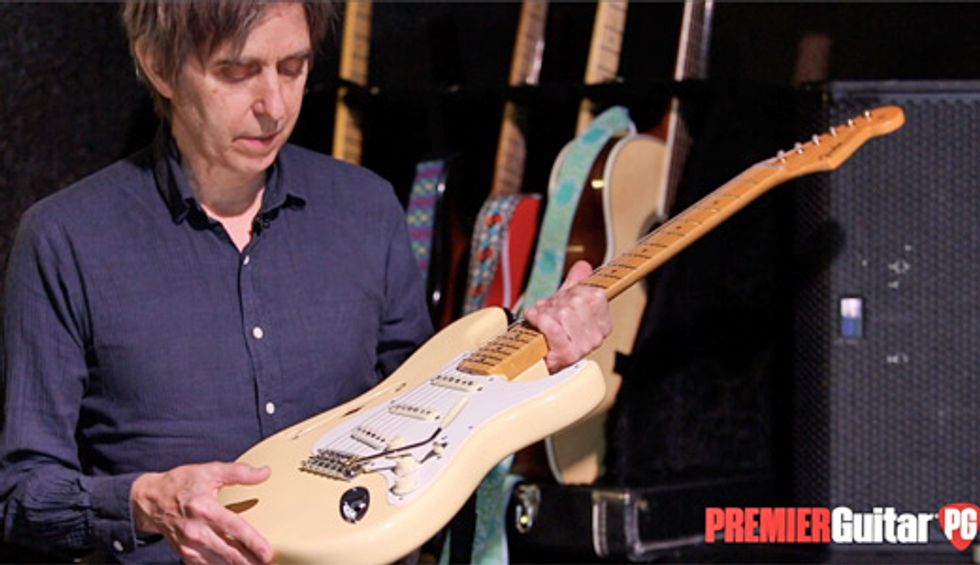
Eric Johnson
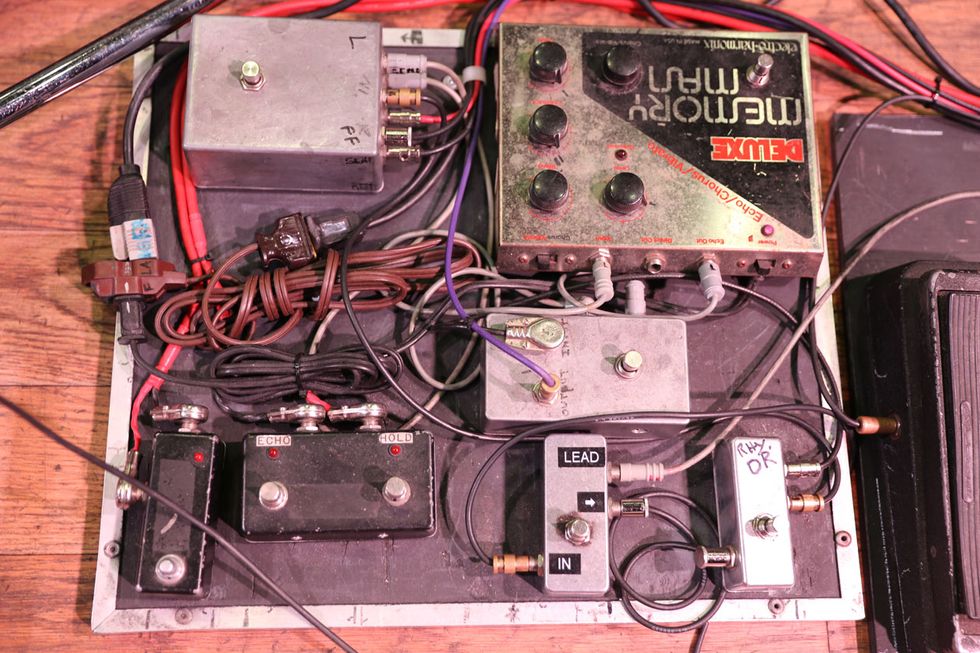
During his 2018 tour, tone connoisseur Eric Johnson went to typically meticulous lengths to recreate the sounds from his breakthrough 1990 album, Ah Via Musicom—although not without some twists. For instance, while he continued to rely on vintage Echoplex tape delays, the two he took on this tour were modded by Bill Webb of Austin Vintage Guitars to bypass the finicky magnetic-tape portion of the apparatus and instead route the signals from a Catalinbread Belle Epoch Tape Echo pedal and two MXR Digital Time Delay rack units (all three not shown) through the Echoplex’s lovely-sounding preamp. Johnson also uses a TC Electronic Stereo Chorus+ Pitch Modulator & Flanger stomp (top).
You can practically smell the “vintage” emanating from this pedalboard, with all the gray patch cables and power cords from yesteryear. However, besides the loop activator for Johnson’s old Electro-Harmonix Deluxe Memory Man—which he typically uses with clean sounds—most of what’s going on here has to do with switching between four amps: a 50-watt 1969 Marshall plexi driving a Marshall 4x12, the guts from a pair of 1966 Fender Twin Reverbs retrofitted to head cabinets driving EVL-loaded Marshall 4x12s, and a Two-Rock Traditional Clean head driving a Marhsall 4x12 stocked with Celestion Vintage 30s.
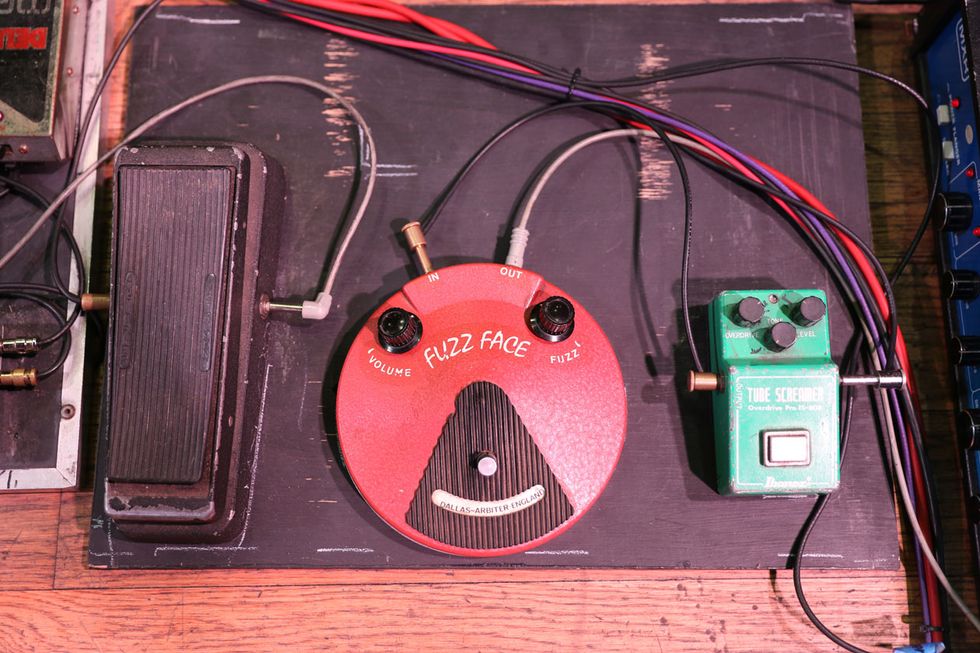
Johnson’s second board has a split personality: The Dunlop Cry Baby wah feeds his Marshall head via an Echoplex and a B.K. Butler Tube Driver pedal (both not shown), while a ’60s Dallas-Arbiter Fuzz Face, a vintage Ibanez TS808 Tube Screamer, and an MXR Flanger/Doubler (not shown) feed the Two-Rock setup.
Check out the full article and his gear.
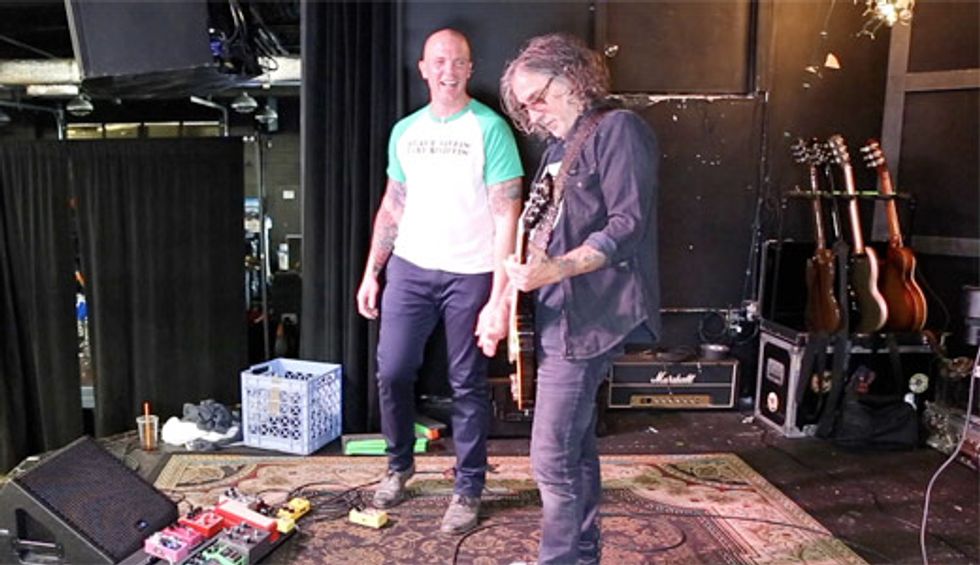
Monster Magnet
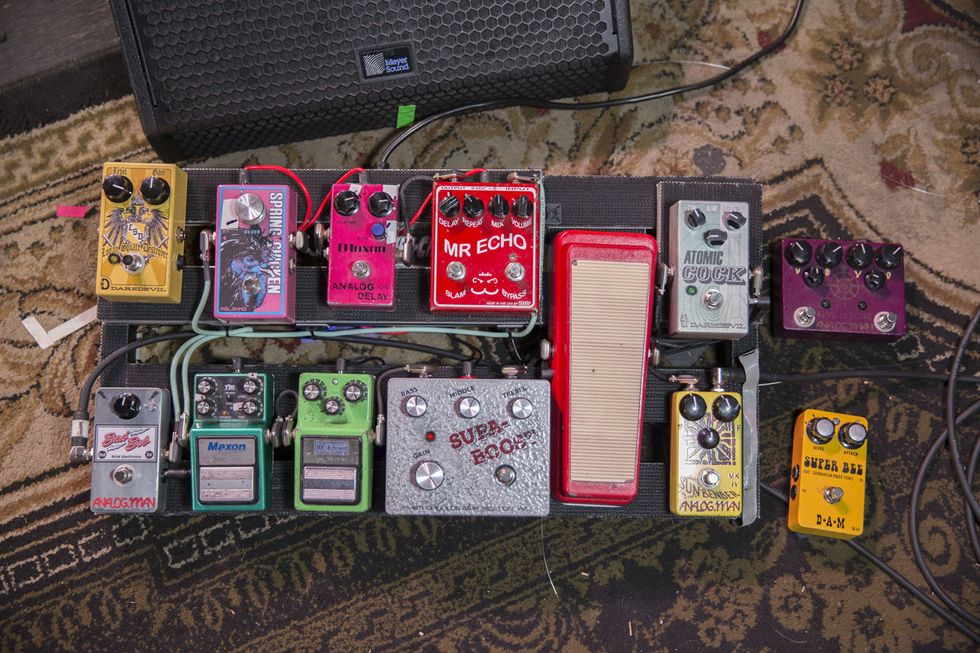
For crunch and buzz, Monster Magnet’s Phil Caivano travels with a board full of troublemakers, including three Analog Man stomps—a Sun Bender, a silver-modded Ibanez TS9 Tube Screamer, and a Bad Bob—a Daredevil Atomic Cock, a Real McCoy Custom RMC5 Wizard wah, an SIB Electronics Mr. Echo, a Metropoulos Supa-Boost, Maxon AD80 analog delay and ST-9 Super Tube Pro Plus Distortion pedals, and a Malekko Spring Chicken. (Also shown, though not used for the date when we caught up with the band, are a Daredevil Logan Square Destroyer, an Analog Man King of Tone, and a D*A*M Super Bee Germanium Fuzz.)
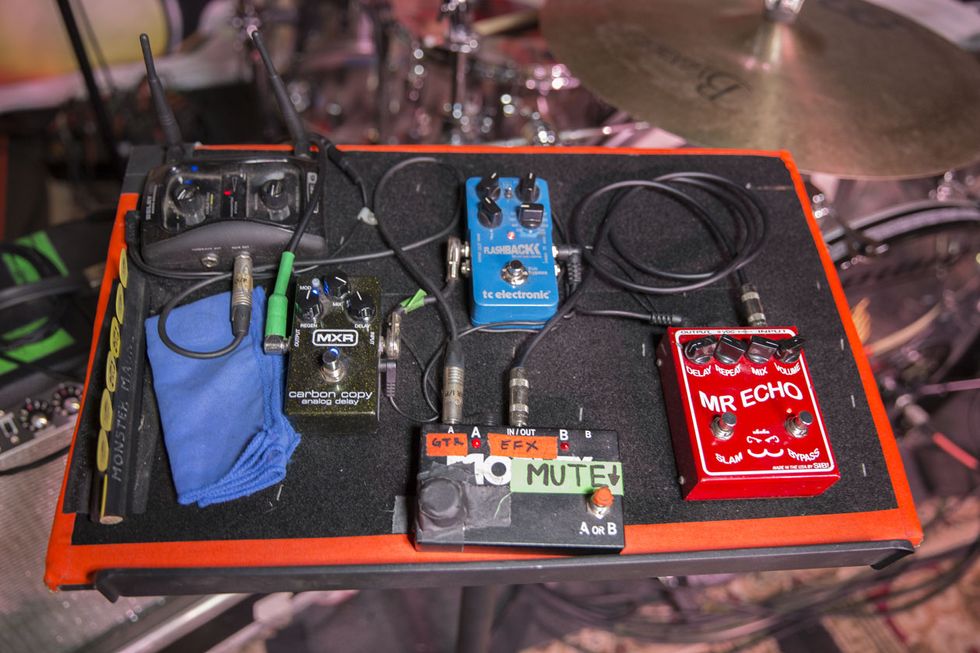
Compared to Caivano’s setup, bandmate Dave Wyndorf’s board is practically barebones, with nothing more than a Line 6 Relay wireless receiver and a Morley A/B box feeding three delays: an MXR Carbon Copy, a TC Electronic Flashback, and an SIB Electronics Mr. Echo.
Check out the full article and their gear.
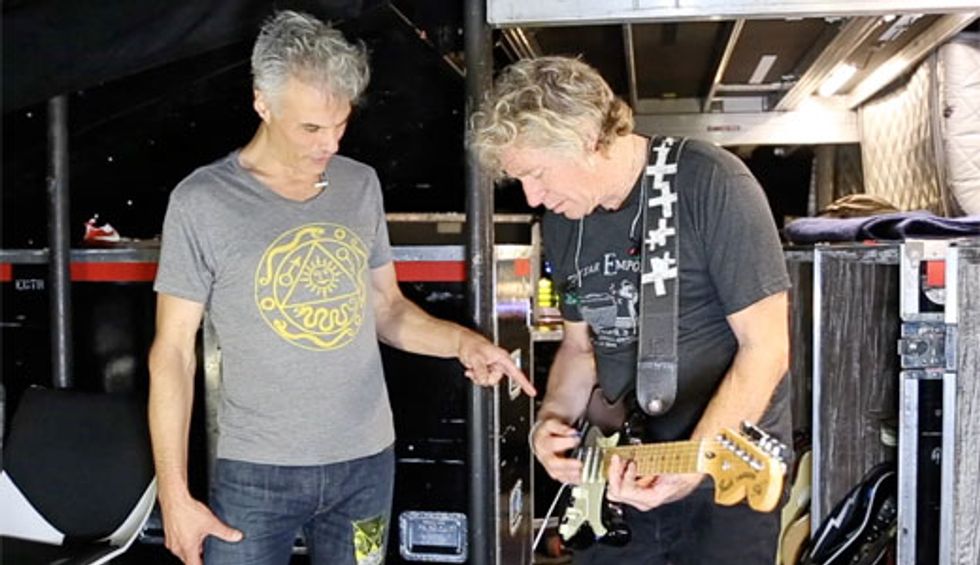
The Edge
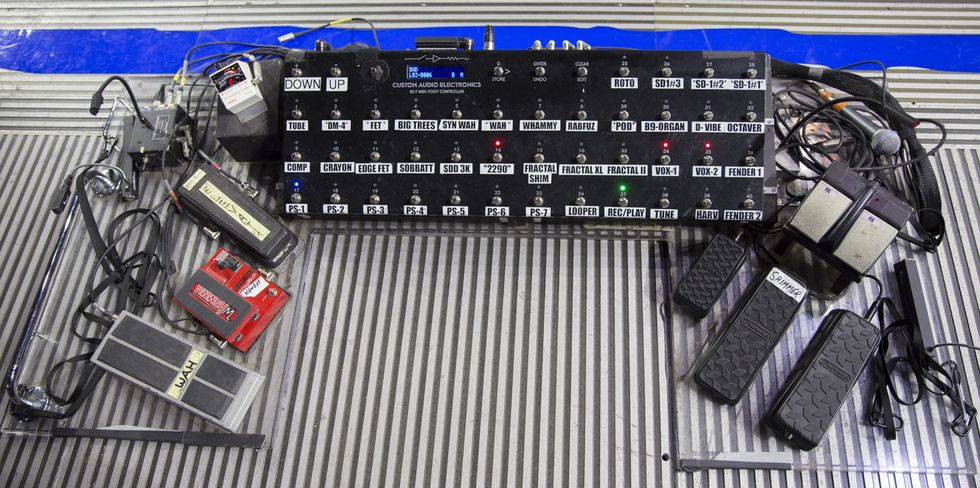
For years now, U2 guitar legend the Edge has tapped rig-maker to the stars Bob Bradshaw to route and program his über-elaborate switching system. The effects are controlled by two Bradshaw RS40 controllers. One is onstage (center), and the other is offstage being overseen by longtime tech Dallas Schoo. Adjacent to the onstage RS40 are a DigiTech WH-1 Whammy, a Boss 500V expression pedal (which governs a CAE remote wah), two Dunlop Volume (X) pedals (one controlling reverb parameters and one controlling delay settings), and a Dunlop Volume (X) Mini for manipulating pitch shifting.
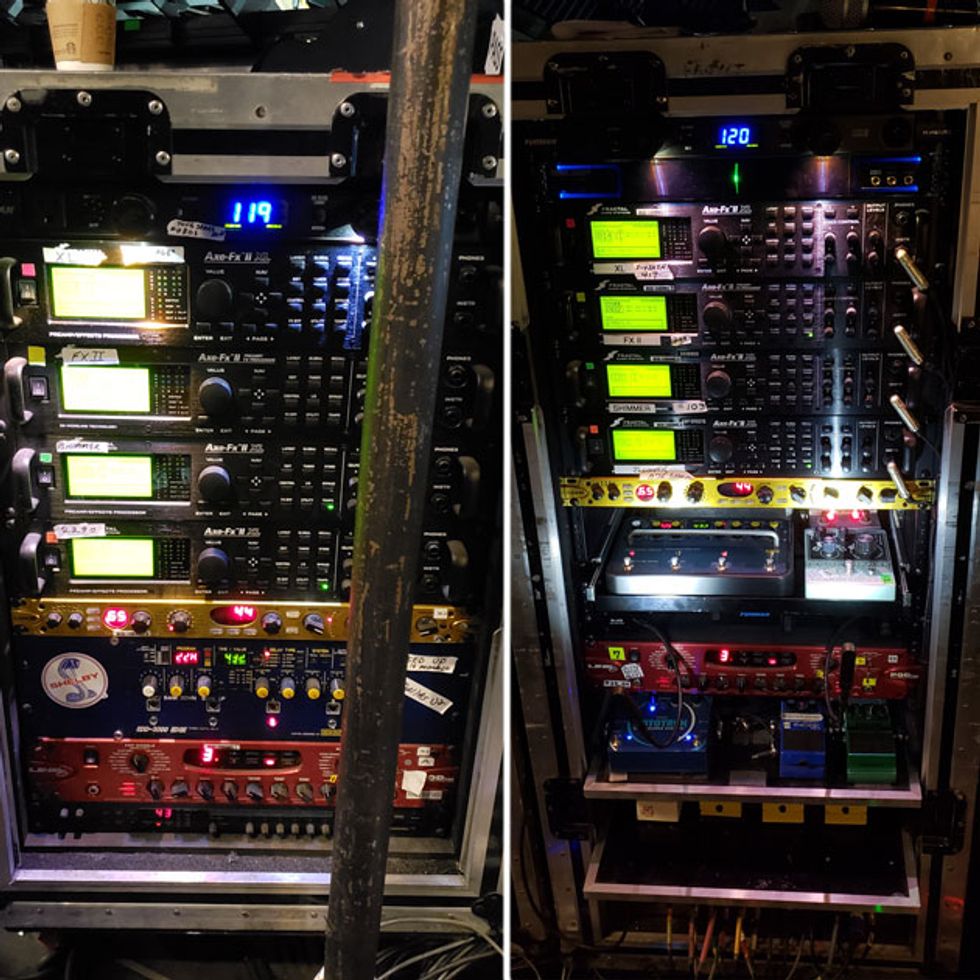
Edge’s “pedalboard” controls two large rack units containing a variety of rack processors, stompboxes, and auxiliary devices, including a Korg Pitchblack rack tuner, multiple Fractal Audio Systems Axe-Fx II XLs, three Line 6 units—a custom DM4 Pro Rack, a Pod Pro, and an M5 Stompbox Modeler—a Korg SDD-300, an Ibanez TS9 Tube Screamer, six Boss stomps—an FA-1 FET boost, a CS-2 Compression Sustainer, an OC-3 Super Octave, and three SD-1 Super Overdrives—a Fender prototype distortion pedal, a Diamond Pedals VIB1 Vibrato, an Electro-Harmonix B9, a DigiTech Synth Wah, a Voodoo Lab Pedal Power Mondo, four MIDI Solutions Mergers, a JHS Crayon, a Sobbat DB-2 Drive Breaker, and several Bradshaw-designed Custom Audio Electronics splitters, loop boxes, and interfaces. All of it runs through Furman PL-PRO DMC E power conditioners.
Check out the full article and his gear.
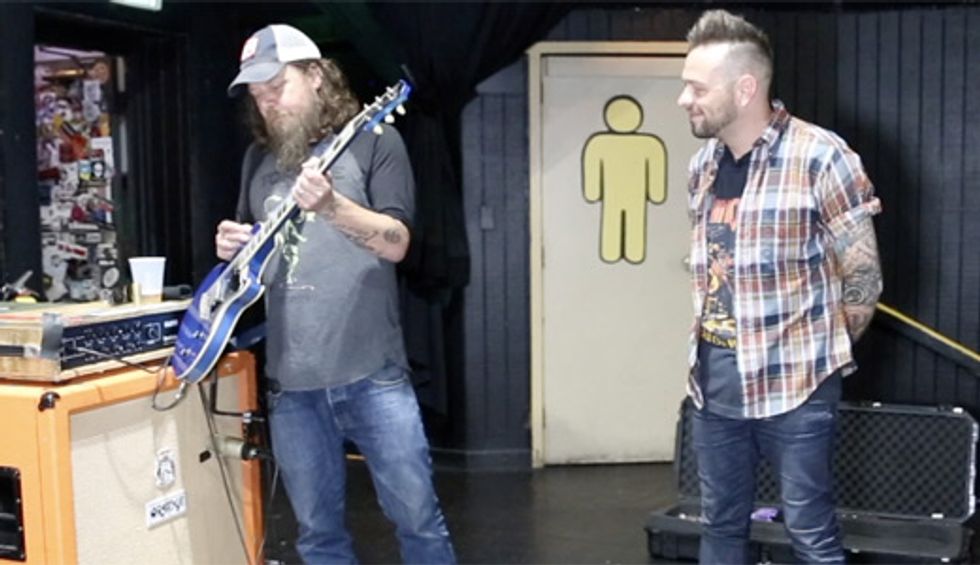
Red Fang
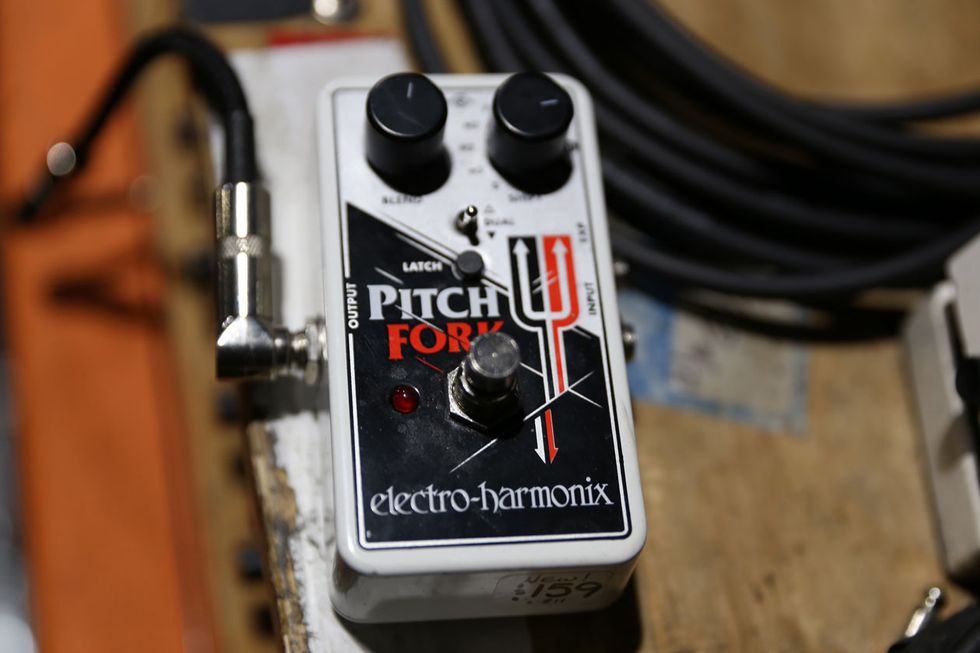
Besides a tuner, the only pedal Red Fang’s Bryan Giles uses is an Electro-Harmonix Pitch Fork, which he employs to add a bit of an octave effect. He also sometimes dimes the Pitch Fork’s shift knob to approximate sounds that would normally require lugging around a separate, drop-C-tuned guitar.
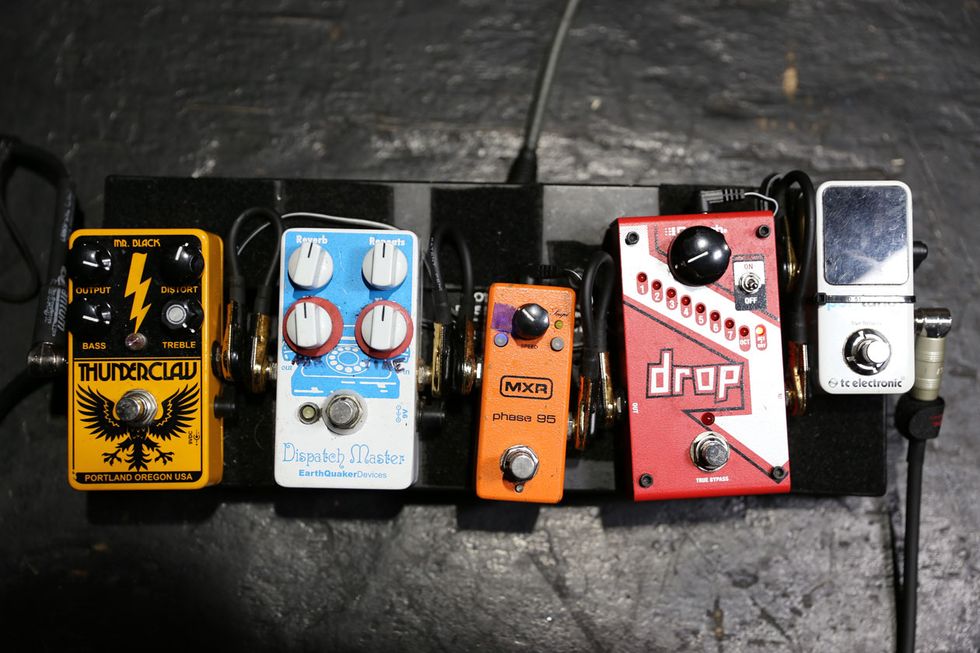
In comparison to Giles’ board, co-guitarist David Sullivan’s is almost self-indulgent, with four times the number of signal mashers: a Mr. Black Thunderclaw, an EarthQuaker Devices Dispatch Master, an MXR Phase 95, and a DigiTech Drop, with a TC Electronic PolyTune2 Mini keeping the guitars in tune.
Check out the full article and their gear.
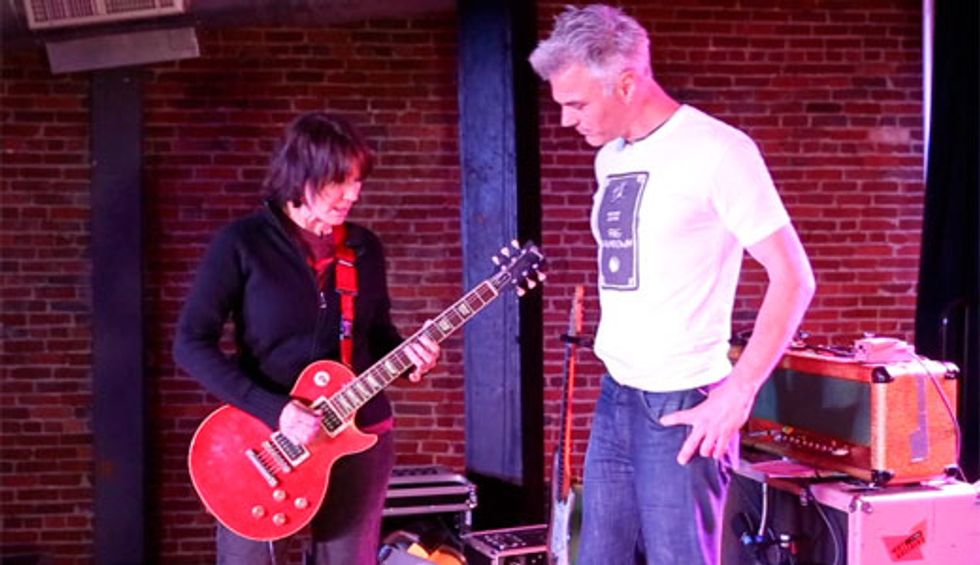
The Breeders
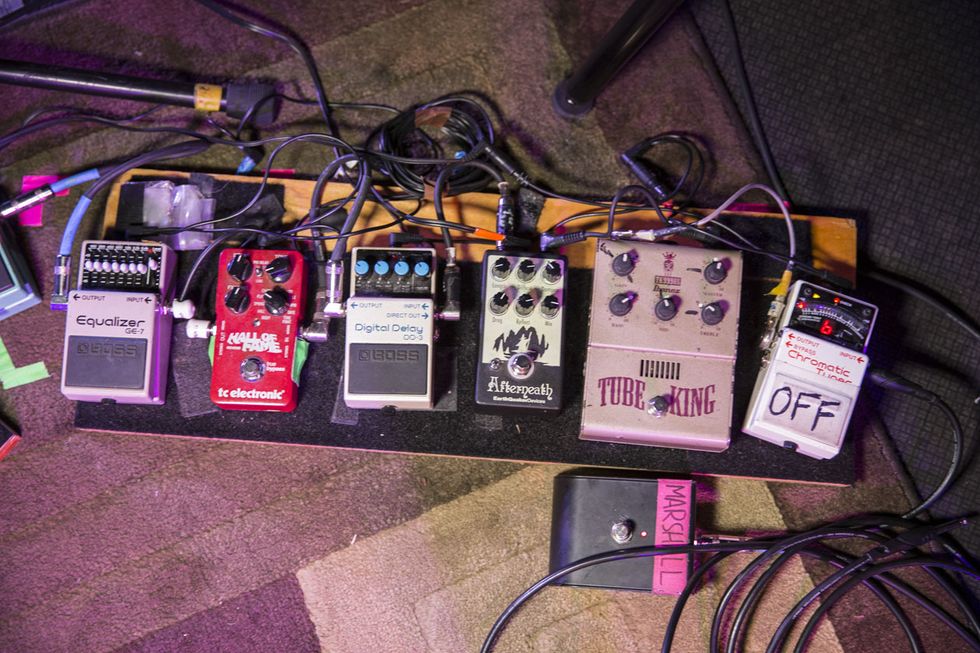
Alt-rock icon Kelley Deal’s pedalboard is lean and mean, sporting a Boss TU-3 tuner, an Ibanez Tube king, an EarthQuaker Devices Afterneath, a Boss DD-3 digital delay, a TC Electronic Hall of Fame Reverb, a Boss GE-7 Equalizer, and a Boss PN-2 Tremolo/Pan (barely visible, off the board to the left). Another GE-7 that’s kept on top of Deal’s Marshall head is used to boost her Stratocaster’s level to match her Les Paul’s.
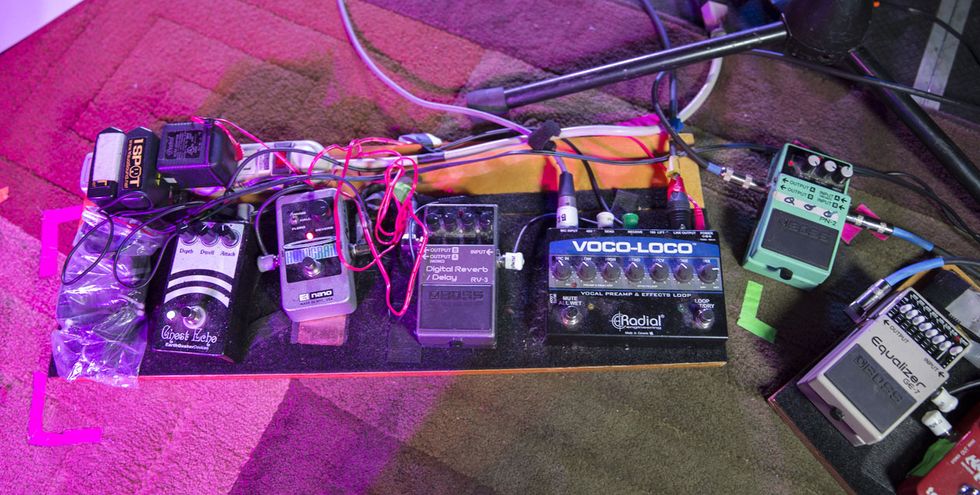
Deal also runs a second pedalboard for vocals. The chain starts with a Radial Engineering Voco-Loco that enables her to route her XLR mic input through a side loop of 1/4" cables to standard guitar effects, such as a Boss RV-3 Digital Delay/Reverb, an Electro-Harmonix Holy Grail Nano, and an EarthQuaker Devices Ghost Echo. All are powered by a Truetone 1 SPOT.
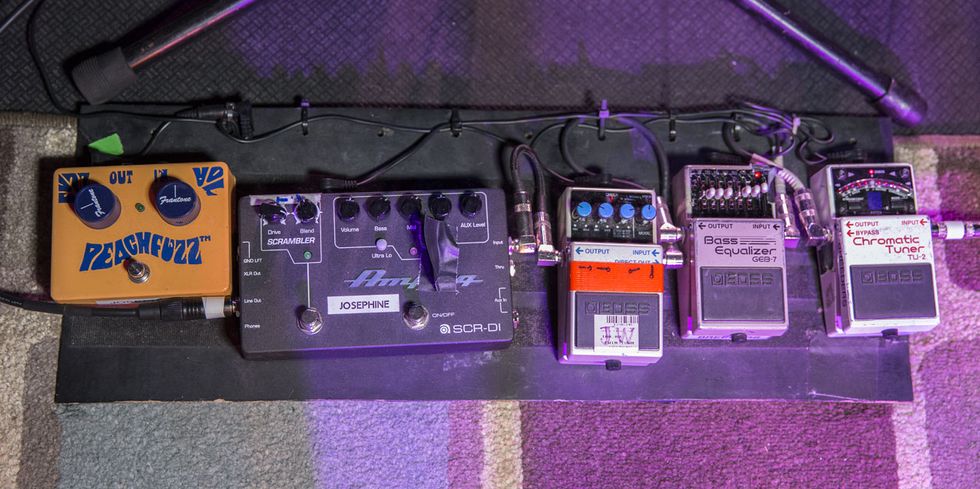
Breeders bassist Josephine Wiggs’ board features three Boss units—a TU-2 tuner, a GEB-7 Bass Equalizer, and a DD-3 digital delay, all feeding an Ampeg SCR DI and a Frantone Peachfuzz (the latter of which was not seeing active duty when we caught up with the band).











![Rig Rundown: Russian Circles’ Mike Sullivan [2025]](https://www.premierguitar.com/media-library/youtube.jpg?id=62303631&width=1245&height=700&quality=70&coordinates=0%2C0%2C0%2C0)






